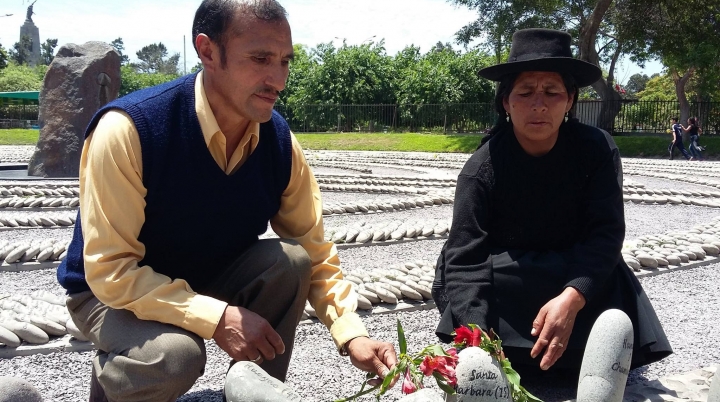






On July 4, 1991, members of the Peruvian military carried out an operation in the Quechua-speaking Andean community of Santa Bárbara in the Huancavelica department that led to the forced disappearances of fifteen people. In the operation, fifteen campesinos, fourteen of them belonging to two families living in the sector of Rodeopampa, were abducted by said military members after having their homes invaded, sacked and burned down. The victims that were taken by the military were mostly children under six years of age and women, one of whom was pregnant at the time. They were subsequently tortured and transported to the nearby abandoned mine, known as “la Misteriosa,” where they were presumably killed at gunpoint followed by a dynamite explosion set off by their abductors to annihilate the bodies. The fifteenth victim of the disappearance had been picked up on the way to the mine by the military members. Four days later on July 8th, Zósimo Hilario Quispe, Marcelo Hilario Quispe, Gregorio Hilario Quispe, and Zenón Cirilo Osnayo Tunque, family members of the disappeared who had not be present during the invasion arrived in Rodeopampa after hearing from authorities and others about what had occurred to their family members. Upon arriving in Rodeopampa, they found that their homes had been burnt down and that there were food and clothes scattered on the ground. That same day, after speaking with neighbors about what had occurred, a complaint report was made to the local Crime Prevention Office by Zósimo Hilario Quispe. Multiple complaint reports were filed by other family members to local offices or “fiscalías” in the following weeks in order to push for an investigation. Following the reports, however, no investigations conducted and the military denied the allegations made about the disappearances. Furthermore, a visit to the “Misteriosa” mine made by the family members by their own accord in which they found human remains did not provoke further investigations by authorities either.
As a result of the failures of domestic authorities to investigate, the case Comunidad Campesina de Santa Bárbara was petitioned to the Inter-American Commission on Human Rights on July 25, 1991 by the organization “Asociación Paz y Esperanza” (“The Association for Peace and Hope”). One year later in July 1992, CEJIL joined the case as a co-petitioner. Eventually, after much difficulty and a prolonging of the reporting process on the part of the State of Peru, the IACHR sent the case to the Inter-American Court in 2013, and it issued a sentence in December of 2015.
Impact of the Case:
Help us continue this critical and urgent work with a donation!
DONATE NOW